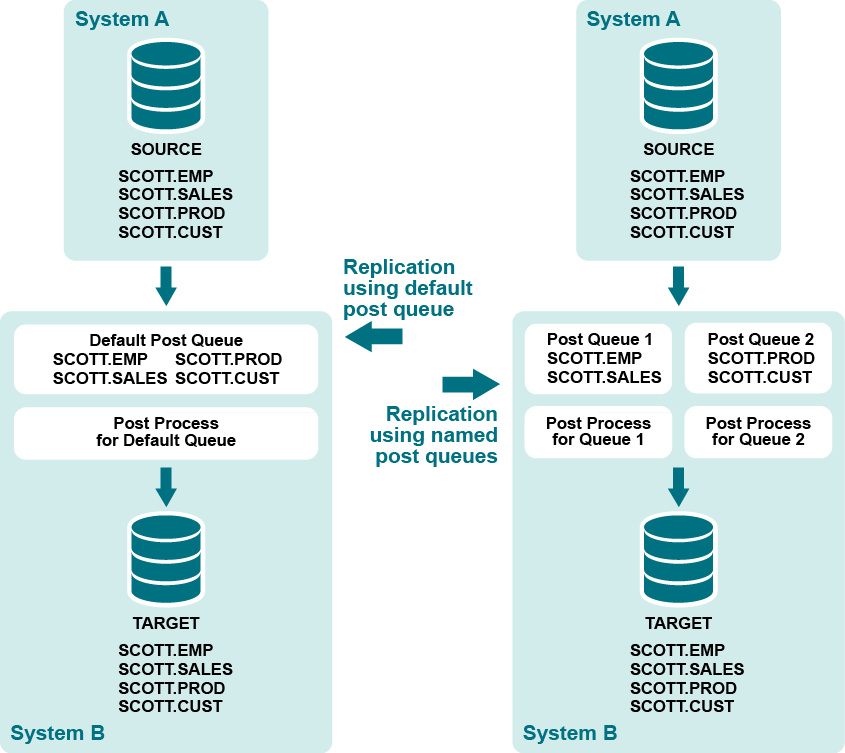A named post queue is an optional component of the routing map in the configuration file. A named post queue is a user-defined post queue with its own Post process, which together operate in parallel to the default post queue and Post process. You can define one or more named post queue-process pairs to establish a set of parallel Post replication streams.
Oracle
All
You can use named post queues to isolate data from different tables into two or more separate Post streams. By using named post queues, you can improve posting performance by isolating objects such as the following that cause processing bottlenecks:
Process the remaining objects through additional named post queues, or use the default post queue. Objects in the configuration file with a standard routing map (host@target) are replicated through a default post queue.
You can use horizontal partitioning to divide the rows of very large tables into separate named post queues as an added measure of parallelism.
You can set SharePlex parameters to different settings for each queue-process pair. This enables you to tune the performance of the Post processes based on the objects replicating through each one.

SharePlex has a maximum number of allowed queues. For more information, see Routing specifications in a configuration file.
Note: If Post returns the error message "shs_SEMERR: an error occurred with the semaphore" on a Windows system, the number of semaphores may need to be increased to accommodate the queues that you created. For more information, see Post stopped .
If you are using named export queues, SharePlex creates a named post queue-process pair for each one by default. If you are not using named export queues, use the following syntax to define a named post queue in the configuration file by adding the :queue component to the routing map:
host:queue@target
| Datasource: o.SID | ||
| src_owner.table | tgt_owner.table |
host:queue[@database_specification] |
| Routing component | Description |
|---|---|
| host | The name of the target system. |
| queue |
The unique name of the post queue. Queue names are case-sensitive on all platforms. One word only. Underscores are permissible, for example: sys2:post_q1@o.myora |
| database_specification |
One of the following for the datasource: o.oracle_SID
One of the following if the target is a database:
|
NoteS:
The following configuration creates one post queue named Queue1 that routes data from table scott.emp and another post queue named Queue2 that routes data from table scott.cust.
| Datasource:o.oraA | ||
| scott.emp | scott.emp | sysB:Queue1@o.oraC |
| scott.cust | scott.cust |
sysB:Queue2@o.oraC |
The following shows how a named post queue is specified when you are routing data in a pass-through configuration using an intermediary system. For more information, see Configure replication to share or distribute data.
| Datasource:o.oraA | ||
| scott.emp | scott.emp | sysB*sysC:Queue1@o.oraC |
A named post queue is identified by the datasource (source of the data) and one of the following:
You can view named post queues through sp_ctrl:
See the SharePlex Reference Guide for more infomation about theses commands.